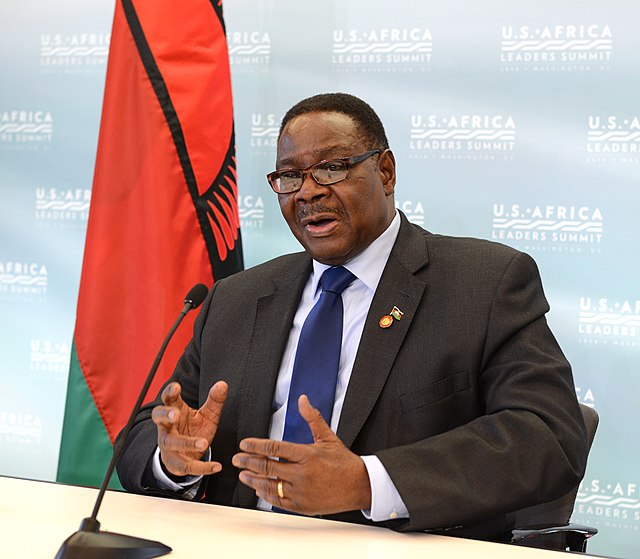Top Qs
Timeline
Chat
Perspective
Flag of Malawi
From Wikipedia, the free encyclopedia
Remove ads
The national flag of Malawi (Chichewa: mbendera ya Malaŵi; Chitumbuka: mbendela ya Malaŵi) was officially adopted on 6 July 1964 when the colony of Nyasaland became independent from British rule and renamed itself Malawi.

Remove ads
Design
The first flag of independent Malawi was adopted on 6 July 1964. A rising sun against a black field is also present in the coat of arms of Malawi and in the flag it officially represents the dawn of hope and freedom for the continent of Africa (when the flag was created, more countries in Africa were gaining independence from European rule). The black represents the indigenous people of the continent, the red symbolises the blood of their struggle, and the green represents nature. The flag resembles the Pan-African flag designed by the Universal Negro Improvement Association, which was founded and led by Jamaican pan-Africanist leader Marcus Garvey, with the red and black bands reversed and a red sun at the top.
It also resembles the flag of the now-defunct Republic of Biafra and the national flag of Afghanistan used from 1974 to 1992.
Remove ads
2010–2012
Summarize
Perspective
A new flag of Malawi was adopted on 29 July 2010, as proposed by the Democratic Progressive Party–led government. The stripes were altered from the previous flag to match the original Pan-African Flag layout, with the red stripe at the top, the black stripe in middle, and the green stripe at the bottom. The rising sun at the flag's top was replaced with a full, centred white sun with 45 rays representing the "economic progress" Malawi has made since becoming independent (it was actually one of the most unsuccessful in the world after 1990).[1] The opposition United Democratic Front announced that it would challenge the legitimacy of flag change in court.[2] The flag was endorsed by the President of Malawi, Bingu wa Mutharika, who approved the flag change on 29 July 2010.[3] There was much public outcry about whether there was a need to change the flag, but the process continued despite being unwelcome to much of the public.[4] The flag was pejoratively nicknamed "Bingu's flag" by the majority of the nation who saw it as an illegitimate flag.[5] Many objected to the new flag, perceiving its adoption as undemocratic.[6]
On 28 May 2012, under new president Joyce Banda, Parliament voted to revert to the independence flag.[7][8]
Remove ads
Flag colours
The colours of the flag are defined using British standard colour shades; these are the same colours as used on the Kenyan flag and later on the South Sudanese flag:[9]
Gallery
- Flag of the president of Malawi
- Flag of the governor-general of Malawi (1964–1966)
- Flag of the governor of Nyasaland (1914–1925)
- Flag of the governor of Nyasaland (1925–1964)
- Flag of the governor-general of the Federation of Rhodesia and Nyasaland (1953–1963)
- Flag of British Central Africa Protectorate (1893–1914)
- Flag of Nyasaland (1914–1919)
- Flag of Nyasaland (1919–1925)
- Flag of Nyasaland (1925–1964)
- Flag of the Federation of Rhodesia and Nyasaland (1953–1963)
- Flag of Malawi (1964–2010, 2012–present)
- "Bingu's Flag" (2010–2012)
Remove ads
References
Wikiwand - on
Seamless Wikipedia browsing. On steroids.
Remove ads













